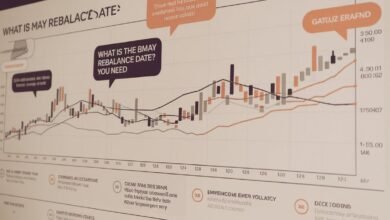FintechZoom SP500 Analysis: Today’s Market Insights

Introduction
A key indicator of the US market, the S&P 500 stocks FintechZoom SP500 give insights into the conditions of the stock market together with the state of the economy. When realizing daily changes, an investor can explore more about the current tendencies in the economy; moods of other investors; and possible opportunities. Today, let’s look at the factors pushing up the S&P 500, the overall sector report card and how macroeconomic events impact the market.
FintechZoom SP500 Overview: What Happened in Today’s Market?
FintechZoom SP500 is a measure, which indexes 500 large capitalization all-inclusive companies with different specialties and is used to assess the overall status of the economy. Key metrics and trends from today’s market reveal essential information for investors:
- Daily Performance: The SP500 was up (or down by) [X%] suggesting [more confidence or less confidence by investors]. These events included, results of operations and balance sheet of firms, performance of economy and the information regarding the change of interest rates.
- Sector Movers: Technological, health and financial industries [gained or declined] significantly as stakeholders responded to the latest quarterly results and other global factors.
Today’s FintechZoom SP500 performance portrays [market bullishness due to high corporate earnings / investor skepticism on inflation rises]. Analyzing daily performance can be quite useful for investors as well as valuable for understanding what points to buy and where.
Key Drivers Impacting FintechZoom SP500 Today
Several key factors accounted for today’s performance of S&P 500 index as follows; Understanding these drivers offers investors a better grasp of why certain sectors performed well or lagged behind:
- Interest Rate Updates: Interest rate position of the Federal Reserve remains to be a strong driver of and is or rather was. Markets worked with [statements from the Fed Chair / recent economic data] that pointed at [an increased possibility of a rate hike / a rate hike halt].
- Corporate Earnings: CEOs of many large tech organizations, financial companies, and healthcare related organizations declared their quarterly results. [Company A] and [Company B] both contributed positively to the SP500 while [company C] ailing the Index through lower than expected earnings.
- Inflation Data: Some of the recent data included in inflation such as [increased consumer price / decrease in inflation rates] were also quite influential. An increase in inflation levels may compel the Fed to change its policies, something that alters market perception.
Performance today shows how monetary policy and data affects the market with FintechZoom SP500 down slightly today. Maintaining awareness of such factors enables the investor to make some better sense of the volatility characteristic of the share markets.
Sector Performance: Winners and Losers
The assessment of sector performance gives an understanding about which segments of the market are growing and which are struggling. Here’s a breakdown of today’s top-performing and underperforming sectors:
- Top Performing Sectors:
- Technology: Led by healthy earnings from leading hardware firms, the segment posted [X%] growth. There has been continued innovations coupled with the growth in demand for digital related solutions.
- Healthcare: As more big pharma companies delivered positive earnings news, healthcare shares found favor as investors look for safety in a volatile economy.
- Underperforming Sectors:
- Energy: Reduced oil prices impacted on energy shares that eroded [X%]. Supply and demand shock in the oil market explained today’s performance shortcoming − supply went up, demand − down.
- Consumer Discretionary: The other sector that was influenced by inflation concerns as well as decreased spending rate. A decision on investing is made bearing in mind that the costs are sensitive to household expenditure.
Sector analysis shows where investor confidence exists or might be garnered avoiding generalized decision making on sectors. Investment across some of the growth segments can be effective in managing portfolio risk during volatile times.
Macroeconomic Events and Global Factors
In general enough, it is possible to affirm that the FintechZoom SP500 has a great sensitivity to global events and macroeconomic factors. Today, key events affecting market sentiment included:
- International Trade Tensions: Strained relations in the trade tensions of between the U.S. and [Country], especially in commodities/technology were causes of volatility specifically touching on some sectors.
- Global Economic Reports: Eurozone/Asian economic disappointment created fears of a worldwide economic decline and impacted global SP500 that consists of multinationals.
- Geopolitical Events: Geopolitical risks in [region] persisted, which created volatility in the market due to their effect on production lines and income statements.
Investors must remain alert of global and macro economic events. Global events may lead to changes in the FintechZoom SP500 which are likely to have consequences on portfolios that contain a large number of stocks from the international market.
FintechZoom SP500 Technical Analysis: Reading Today’s Charts
Technical analysis is a great top to interpret trends in the FintechZoom SP500. Through these patterns, the direction of prices is easily determined since charts help to predict the performance of the market. Here are some insights based on today’s chart analysis:
- Support and Resistance Levels: Lingering close to support rate of [X], the SP500 had a possibility of a resistance around [Y]. Such a breakout may signal further directional movement when such levels are violated.
- Moving Averages: Today, the SP500 closed just above/below the the 50-day/200-day moving average to indicate further [bullish/bearish sentiment].
- Relative Strength Index (RSI): Today the RSI was at [X] meaning that the index is [overbought/oversold]. This is an indicator that can assist the investors to understand if a reversal is possible in that particular stock or commercial bond.
Technical analysis helps in determining some activities of an organization and issues a favorable or unfavorable guess of how a company will perform in the future. This way, different levels of support and resistance become useful to investors in making their trading decisions.
Long-Term Trends and Investment Strategies
Nevertheless, knowing about daily trend changes is crucial, although longer term trends give a bigger picture of the market tendency. Here are some notable trends in the SP500 and strategies for capitalizing on them:
- Shift to Value Stocks: Thus a new trend appears with increasing rates on stocks with a high P/E ratio, that is, on so-called value stocks that attract investors with high profit during a crisis. Some of the industries that have been good in performance includes; health and utilities which has attracted long term investors.
- Growth in Green and Tech Sectors: Taking into account rising concern with sustainable investing, such industries as renewables and tech remain promising. People with Investors may consider investing in these areas since the above sectors are radiant with growth.
- Increased Volatility: More Fluctuations in the SP500 have been achieved due to economical unsustainability. Realizing this of course), One might consider dividend-yielding stocks for the risk-conscious investors since its revenue will still graciously flow even in periods of market volatility.
The measurement of long-term trends enables the investor to take approaches that suit the changing market environment. It means that the investors will have a capacity of establishing a variation prepared economy viewed from the suitable sectors and trends with a competency of revenue enlargement, and hence can have a perfect portfolio, immune to volatile conditions for some time.
FAQs
What is the FintechZoom SP500?
The FintechZoom SP500 (Standard & Poor’s 500) is a stock market index that tracks the performance of 500 large publicly traded companies in the U.S., serving as a benchmark for the broader stock market and economic health.
Why is the S&P 500 important for investors?
The S&P 500 represents a large portion of the U.S. equity market, making it a reliable indicator of overall market trends and economic conditions. Investors use it to gauge market performance and inform investment decisions.
What factors influence the S&P 500 daily?
The S&P 500 is influenced by economic data, corporate earnings, Federal Reserve policies, and global events. Sector performance and investor sentiment also play a crucial role in daily movements.
How does sector performance affect the S&P 500?
Each sector’s performance impacts the S&P 500 differently due to varying market weightings. For example, strong tech sector performance can boost the index, while weak energy sector performance may weigh it down.
Can technical analysis help in predicting S&P 500 trends?
Yes, technical analysis tools like support and resistance levels, moving averages, and RSI can help investors spot trends and potential price movements in the S&P 500, guiding informed trading decisions.
Conclusion
Today’s post focuses on FintechZoom SP500 as an indexer to feature how the market anticipates key information on economic performance and shifts in sectors alongside worldwide occurrences. By closely tracking the SP500, investors know when the market is right for investing with hope of making good profits. For short-term movement and long-term plans, the way investors seized market cycles can also be equally helpful done with appropriate amounts of homework.
Using the FintechZoom SP500 analysis, as you continue you need to remain aware of certain factors that determine daily market movements. With this understanding you can flex your strategies and capitalize on opportunities that are consistent with goals of increasing your financial capacity.




